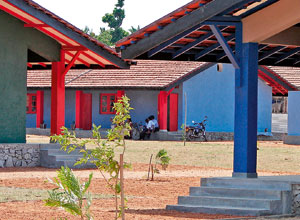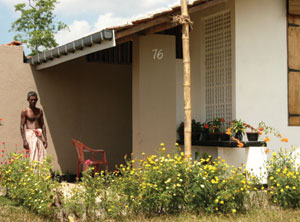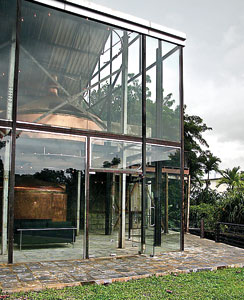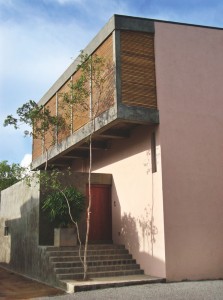
Thursday, October 6, 2011
RIP Apple Man!

Monday, September 19, 2011
Design Charrette by the SLIA!
The project will take place on the 3rd and 4th October 2011. The services provided by the Architects are free!
Lets hope that there will be more projects of this nature in the future as well!
Monday, July 25, 2011
Geoffrey Bawa Award for Excellence in Architecture 2011

Archt Yudish Ganeshan was adjudged the first runner-up receiving Commendation for his post-tsunami Udayapuram school in Periyakallar. Richard Murphy Associates was the other among the eight shortlisted nominees to be chosen for Honourable Mention for the British High Commission building in Colombo.
The well-choreographed event saw two icons of design Ena de Silva Aluwihare and Barbara Sansoni Lewcock receiving Lifetime Achievement Awards and a keynote address by Booker prize winner Michael Ondaatje.







Tuesday, July 12, 2011
Wednesday, March 9, 2011
Tuesday, March 8, 2011
Monday, March 7, 2011
Waterscraper!


Tuesday, March 1, 2011
Friday, February 25, 2011
Thursday, February 24, 2011
Architect Barbie!
2 AIA architects form Upstate New York have worked to develop an authentic architectural image for Barbie. She sports a roll of drawings in a shoulder tube, an architecturally inspired dress, hip architect glasses, and a hard hat. Her fashion boots would be a bit suspect on the job site however.
more info from here
Namaste Tower-India
LOWER PAREL | Namaste Tower | 300 m | 62 fl | Site Prep The Namaste tower! Designed by the Atkins design studio, work IS currently underway on this 300m-62 storeyed mixed use tower that will encompass a hotel, office and retail space. The location is Ambika mills which is a couple hundred meters south of the The developer of the project is unknown. #3
The renders and text were submitted by Atkins to the World Architecture Festival in Barcelona (3-5 Nov 2010).
Namaste: Hotel and Office Tower
Category: Future Projects - Commercial
Location: Mumbai, India
Architects: WS Atkins, Dubai, United Arab Emirates
Atkins, United Arab Emirates
Following the long tradition of great Indian Architecture it was our aim that the Namaste Tower will stand as a landmark structure, representative of the burgeoning economic and cultural significance of India. We aimed to design a building that would become representative of the city: the picture postcard of Mumbai.
Key Statistics:
• 120,000 m2 of Gross Construction Area
• 380 key luxury hotel
• Exclusive restaurants, bars, banqueting and spa facilities
• 9,000 m2 of A grade office space
• 6,000 m2 of world class retail space
• 300 m overall building height
“Namaste"
The traditional Indian greeting of ‘Namaste’, where the hands are clasped together in greeting, is the inspiration for the design of this tower. In Sanskrit “Namaste` means “I bow to you`. It has a spiritual significance of negating one’s ego in the presence of another.
The Architecture of the Namaste Hotel builds on this ancient Indian expression. The two wings of the hotel are clasped together like hands greeting the city of Mumbai. In this way the architectural design of the hotel provides the ultimate symbol of hospitality and welcome, as seen in the as seen in the cultural context of India.
Visual Relationships to and from the Site
With a proposed height of 300 m the tower will be seen from a distance of more than 40 km. Therefore the visual appearance of the project as a major landmark is of great importance to the city of Mumbai.
Views from the tower will extend to the South over the Mahalkshi Race course towards the Mumbai Peninsula and to the South West over the Indian Ocean. The views to the north East are towards a number of adjacent towers that are currently being constructed. The orientation and massing of the tower have been designed in order to make the very best of these visual relationships.
The Building Skin
The tower has been designed to cater for large scale Indian weddings. The occasion of a Mehndi ceremony (where the hands and feet of the bride and groom are decorated with henna) is often one of the most important pre-wedding rituals in India.
The design seeks to build on the theme of the clasped hands by referencing the intricate Mehndi patterns through the treatment of the building skin. The tower is will be clad in fritted glazing that combines to form an architectural scale graphic on the exterior of the building. This will create a sense of transparency and depth to the building while at the same time helping to maintain the thermal qualities required to meet the building’s envelope design criteria.
It is proposed that the large scale canopies over the drop-off points area support an array of solar thermal collectors. Given the available surface area and annual sunlight conditions these have the potential to provide 12% of the energy required to heat the hot water for the hotel.
Location (View on google maps):
^Site prep underway
General Arrangement
The tower is made up of two separate wings (or hands) which together form the architectural expression of “Namaste”. The space between the wings forms the corridor spaces. At either end of the corridor space a pair of open atria will offer hotel guests dramatic framed views out over the city.
Internal Atrium Gardens
These atria also serve to bring natural light deep into the plan. At the plant floor levels these atria are broken with internal gardens that serve to bring greenery into the corridor and atrium spaces. It was a central design aim to ensure that the circulation areas of the hotel, (including corridors) are just as impressive as the rooms themselves.
The Podium
The geometry of the podium is designed to integrate fully with the design of the tower. Thus it is a highly symmetrical form that responds to the wing like canopies above the drop off. Containing mostly retail, the facade of the podium is activated with water features and fountains that cascade down to street level.
The Summit
At the summit of the building a generous quadruple height atrium space encloses a Sky Restaurant and Bar which will provide a unique vantage point for patrons to gain panoramic views out over the city.



































